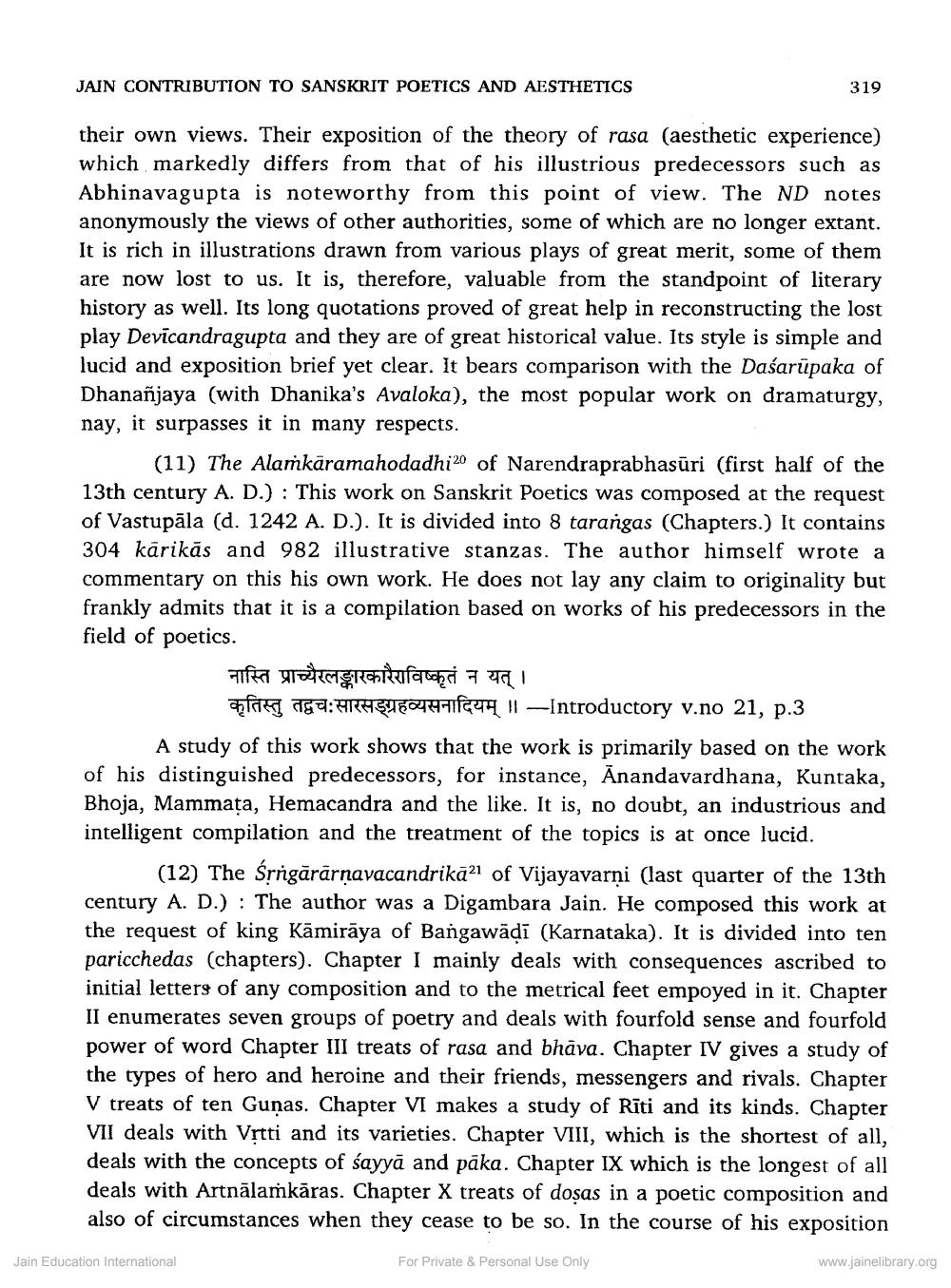________________ JAIN CONTRIBUTION TO SANSKRIT POETICS AND AESTHETICS 319 their own views. Their exposition of the theory of rasa (aesthetic experience) which markedly differs from that of his illustrious predecessors such as Abhinavagupta is noteworthy from this point of view. The ND notes anonymously the views of other authorities, some of which are no longer extant. It is rich in illustrations drawn from various plays of great merit, some of them are now lost to us. It is, therefore, valuable from the standpoint of literary history as well. Its long quotations proved of great help in reconstructing the lost play Devicandragupta and they are of great historical value. Its style is simple and lucid and exposition brief yet clear. It bears comparison with the Dasarupaka of Dhananjaya (with Dhanika's Avaloka), the most popular work on dramaturgy, nay, it surpasses it in many respects. (11) The Alamkaramahodadhi20 of Narendraprabhasuri (first half of the 13th century A. D.) : This work on Sanskrit Poetics was composed at the request of Vastupala (d. 1242 A. D.). It is divided into 8 tarangas (Chapters.) It contains 304 karikas and 982 illustrative stanzas. The author himself wrote a commentary on this his own work. He does not lay any claim to originality but frankly admits that it is a compilation based on works of his predecessors in the field of poetics. नास्ति प्राच्यैरलङ्कारकारैराविष्कृतं न यत् / opfaert 169: FRHEYECH 11 Introductory v.no 21, p.3 A study of this work shows that the work is primarily based on the work of his distinguished predecessors, for instance, Anandavardhana, Kuntaka, Bhoja, Mammata, Hemacandra and the like. It is, no doubt, an industrious and intelligent compilation and the treatment of the topics is at once lucid. (12) The srngararnavacandrika21 of Vijayavarni (last quarter of the 13th century A. D.) : The author was a Digambara Jain. He composed this work at the request of king Kamiraya of Bangawadi (Karnataka). It is divided into ten paricchedas (chapters). Chapter I mainly deals with consequences ascribed to initial letters of any composition and to the metrical feet empoyed in it. Chapter II enumerates seven groups of poetry and deals with fourfold sense and fourfold power of word Chapter III treats of rasa and bhava. Chapter IV gives a study of the types of hero and heroine and their friends, messengers and rivals. Chapter V treats of ten Gunas. Chapter VI makes a study of Riti and its kinds. Chapter VII deals with Vrtti and its varieties. Chapter VIII, which is the shortest of all, deals with the concepts of sayya and paka. Chapter IX which is the longest of all deals with Artnalamkaras. Chapter X treats of dosas in a poetic composition and also of circumstances when they cease to be so. In the course of his exposition Jain Education International For Private & Personal Use Only www.jainelibrary.org




